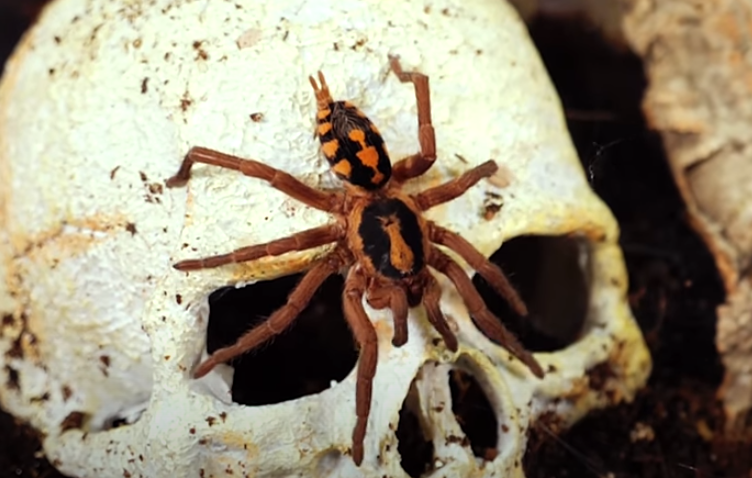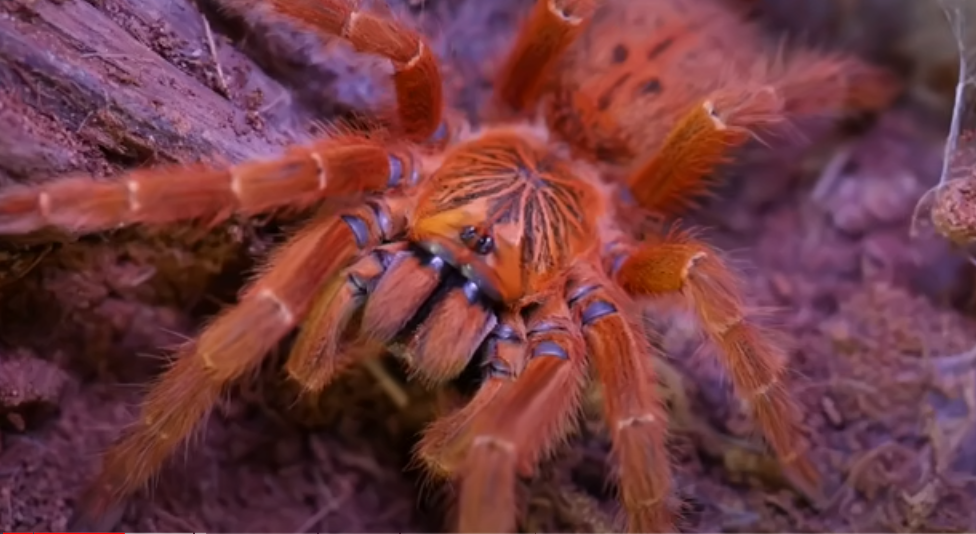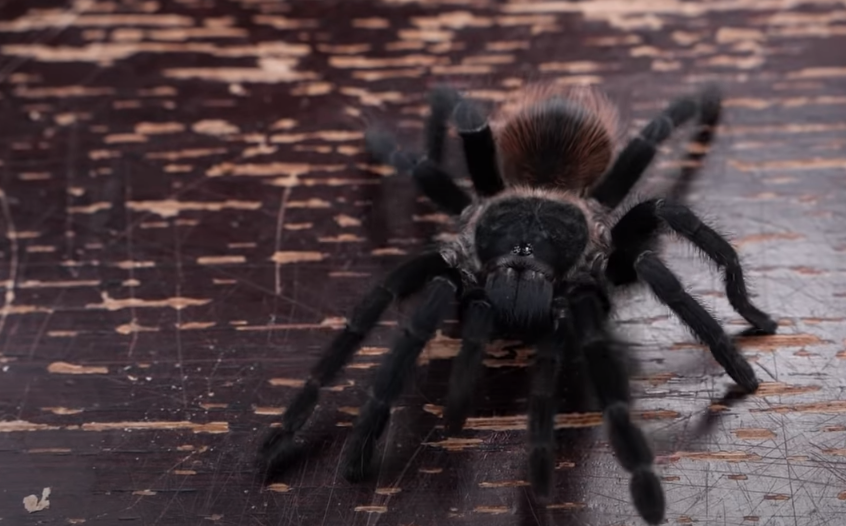The Cobalt Blue Tarantula is a sensational type that belongs to parts of South-East Asia in nations such as Thailand, Laos, Myanmar, Cambodia and Vietnam. They are tool-sized Arachnids with a leg period of about 5 inches. They are known to be a highly protective variety and will not hesitate a little bit if they feel endangered. This makes them less of a beginner variety than many various other generally maintained tarantulas in captivity.
Table of Contents
Toggle
Cobalt Blue Tarantula Taxonomy
The Cobalt Blue Tarantula comes from the Family members Theraphosidae. This essentially implies that the spider is a tarantula, as well as over 1,000 various spiders have actually been identified as part of the family members Theraphosidae.
Theraphosidae belongs to the infraorder Mygalomorphae. While a number of the various other varieties in this infraorder are typically described as tarantulas or ‘incorrect tarantulas’, the types in the family Theraphosidae are taken into consideration as the ‘true’ tarantulas. Tarantulas can be discovered throughout the American Continent (omitting Canada), Africa, Mediterranean Europe, South-East Asia and Australia.
| Common Name | Cobalt blue tarantula |
| Species Name | Cyriopagopus lividum |
| Family Name | Tarantulas |
| Price | Between $90 to $150 |
| Size | 13 cm leg span |
| Lifespan | Up to 15 years |
| Diet | Large insects |
| Tank Size | 10 to 20-gallon tank |
This species comes from the category Cyriopagopus, which is a category which contains 12 Tarantulas from South-East Asia and China. Some of the various other species in this category consist of the Thailand Black Tarantula as well as the Oriental Chevron Arachnid. Till recently, the Cobalt Tarantula was categorized under the category Haplopelma as Haplopelma lividum till it was reclassified as Cyriopagopus lividus.
Physical Appearance of Cobalt Blue Tarantula
The Cobalt Blue Tarantula is a tool-sized tarantula with an average leg period of regarding 5 inches. Its most magnificent feature is its iridescent blue legs which give this variety its familiar name.

The spider’s body and abdominal area are ordinarily dark brown or black in colour. The legs additionally show up dark until they are revealed to sufficient lights, where they will change right into a lively blue iridescence. Spiderlings are typically duller than adults and also generally appear greyish-blue in the shade. Read about old world tarantulas to discover more about their fascinating behavior and unique habitats.
Natural Habitat and Distribution
Cyriopagopus lividus is native to the exotic rainforests of South-East Asia. They can generally be located in countries such as Thailand, Myanmar, Malaysia and also Singapore. The Blue Tarantula is the earthbound variety that stays in burrows in the ground. They usually construct these silken burrows themselves and will certainly invest most of their time in them, leaving to hunt for food. They share much of their geographical array with varieties such as the Blood Python, Asian Creeping Plant Snake, and Dragon Snake, although it has their distinct environment.
Actions as well as personality
The Cyriopagopus lividus is very defensive when threatened and will readily attack if prompted. Being a Vintage variety, the cobalt blue has potent poison, and its bite is incredibly agonizing, with some targets reporting muscle spasms. They are swift and speedy beyond their burrows, and dealing with the cobalt tarantula is not recommended. Cyriopagopus lividus tarantulas do not have the urticating hairs that New World species do, so hair flicking in this type is not an alternative.
Fossorial
This tarantula is a fossorial pet. It is adjusted to living underground, where it digs deep burrows and also passages. This type is really semi-fossorial. This spider spends a great deal of time underground, but not all time. It does periodically emerge from its passages to heat up in the sun and forage for food.
Like many fossorial animals, cobalt blue tarantulas significantly influence their environment. When the arachnid relocates out, the passages and also burrows they dig are commonly made use of by various other types. The giant crawler might additionally pass down the environments through the generations.
Cobalt Blue Tarantula as Pets
The Cyriopagopus lividus is a spectacular type however isn’t recommended for beginner tarantula types. Just like numerous Eastern species, these crawlers can be highly protective. This can often appear as ‘hostile behavior’, but it is, in fact, a reaction to the crawler feeling endangered.

Their first instinct when threatened is to run away, but if this isn’t a choice, they will certainly display a threatening pose to frighten a potential risk. They will certainly not think twice about attacking if this does not function. While this is a spectacular variety, they don’t make an excellent screen tarantula as they invest a lot of time hiding in their burrow. At ideal, you will only see the front half of their body, poking out the front of the cave, waiting for food.
Make sure you are devoted to a long-lasting pet, as men can live 5-6 years while women can live for over 15 years if you purchase a Cobalt Blue Tarantula.
Feeding
A grown-up Cobalt Blue Tarantula will succeed on a couple of Cricket or roaches weekly. You can also supply various other commercially offered pests, such as mealworms. This would be a substantial meal, so do not overdo it with these. Any remaining or leftover food should be eliminated from the enclosure within 24hrs. Do not stick your hand into the unit; remove the excess with feeding bands.
Spiderlings can be fed pre-killed little crickets twice a week. They will undoubtedly scavenge for food at this dimension, so approving pre-killed typically isn’t an issue. Once more, eliminate any leftover food within 24 hours.
Housing of Cobalt Blue Tarantula
As the Cobalt Tarantula isn’t highly energetic, a grown-up with a leg span of around 5 inches will succeed in an 18 ″ x 12 ″ x 12 ″ storage tank. You will certainly need to ensure that the container is retreat-proof, as these crawlers are known to be Houdini. You will undoubtedly need a deep layer of substratum as these arachnids like to delve, so attempt to provide them with at the very least 6-8 inches of substrate. Coco Fiber or peat soil are great alternatives to make use of.

They require high moisture, so you will need to spray down the room with a light mist to keep humidity levels up. Nevertheless, you do not want soaked substratum, so be conscious while misting. You can likewise give these spiders above-ground hides, but they will invest most of their time in their burrow. A shallow water bowl will certainly also assist with humidity degrees
Temperature level
You can keep your Cyriopagopus lividus Tarantula at area temperature. It will be comfy for them if the temperature level is comfortable for you. This adds to their simplicity of care as you don’t require any unique heating tools. If you live in a cold environment, you might want to add some additional warmth during the wintertime months. You typically wish to keep them in between a temperature series of 75F-85F.
Substratum
The Cobalt Blue Tarantula is a burrowing type, so you must use enough substratum to enable them to dig their burrows. These arachnids like high moisture, so you must pick a substratum that will hold humidity well without moulding. Coco Fibre is a terrific choice for this. However, there is likewise a range of other substrates that will certainly work well. You do not want the substratum to be saturating damp. A light misting one or two times a day needs to be enough.
Handling
The Cobalt Tarantula is a preferred variety in the pet profession; however, it needs to be considered a hands-off species as these spiders commonly don’t like to be managed. They are frequently referred to as a hostile type. However, this isn’t truly the case. A far better summary is that they are highly defensive. If it feels intimidating, the distinction is an aggressive variety will proactively look to attack, while defensive types will only strike.
This fast variety will usually attempt to flee when you place your hand into the enclosure. They may also perform a protective screen of slapping against the ground to try and scare you off. If this doesn’t function, they won’t be reluctant to bite.

Molting
A restorative procedure, molting will be the last tell-all when it concerns determining whether or not your cobalt blue tarantula is a male or lady. Sexually dimorphic, the man will be a grey color, while the lady will continue to be blue. Rejection to eat is just one of the primary indicators to search for when an upcoming molt is anticipated. It will undoubtedly be the most recognizable evidence concerning your new pet hole. You will certainly also unavoidably discover the molt, eliminated and discarded by your arachnid, most likely at the entryway of its burrow.
If you believe that your Cyriopagopus lividus might be entering into a molt or has freshly molted due to the thrown-out exoskeleton, make sure to remove any online feeders from the room.
Searching
The cobalt blue tarantula can opt for a long time without food. It is carnivorous, and its primary food sources are mice, reptiles, and various other amphibians. Crickets are a typical dish when the blue cobalt is kept as a family pet.
The venom produced by blue cobalt is not constantly harmful to human beings. But, it is always detrimental to its target. Blue cobalt crawlers develop a substantial internet, which helps to catch prey. When its game is captured on the web, the tarantula delivers a toxic sting that kills the victim. The arachnid has a poor sense of sight and hearing, so it can not see or hear its victim. Instead, it depends upon vibrations from the target caught up in its internet.
After disabling its target, the tarantula launches enzymes that dissolve the prey, making it more straightforward to feast on. The sting of blue tarantula will differ depending on the sufferer. When released on a human, the venom typically does not create fatality. The ability to differentiate between a human and its prey and regulate its venom as necessary is a distinct quality of cobalt blue tarantulas.
Reproduction
Blue cobalt arachnids maintained as family pets are generally bred in bondage. Catching tarantulas in the wild and keeping them in captivity as pets is a type of exploitation that can hurt the environment, triggering these varieties to vanish.
When breeding, it is essential to mimic the spider’s natural surroundings as closely as feasible. The perfect temperature level, moisture, and dampness degrees should be observed to guarantee the successful breeding of as many eggs as possible. When the female has lately moulted, the ideal time to mate women and male cobalt blue is. This will undoubtedly guarantee she does not shed not long after mating.
Before mating, the lady must have a sizeable adequate room. She also requires sufficient time to dig a burrow to pull away after mating to lay and protect her eggs. The female arachnid should get on a full belly 24 hours before presenting the man. You should remove the male from the enclosure as quickly as breeding is finished.

Complying with effective mating, the cobalt blue woman typically releases an egg sac at week 8. It is best to leave the eggs with the mom tarantula for the first thirty days. There should be limited movement around the room throughout this moment. After thirty days, dog breeders take the egg sac out of the unit for artificial incubation. The eggs need 23 to 25 degrees C moisture and a humidity of about 80%.
Conclusion
Cobalt blue tarantulas are several of one of the most remarkable Old Globe arachnids. Not only are they lovely in all their sparkling blue magnificence. Blue cobalt also produces terrific pets if you know how to handle, feed, and care for them.
I hope this guide on the facts concerning cobalt blue tarantula stimulated your rate of interest and also will certainly aid you in making a wise choice if you are looking to embrace one of these. The Cyriopagopus lividus is known to be defensive when endangered and will easily bite if prompted. They are swift as well, as the very fast exterior of their caves and handling this tarantula are not suggested. Cobalt blue arachnids do not have the urticating hairs that New World types do, so hair flicking in these types is not an option.
This tarantula is a spectacular type however isn’t suggested for beginner tarantula species. A vital process, molting will undoubtedly be the last tell-all when it comes to establishing whether or not your cobalt tarantula is a male or female.
To know more about tarantulas visit here:






